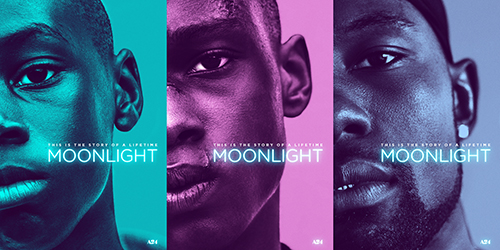In the midst of a season consolidated by phenomenal arthouse films, rarely does a movie perfectly succeed in resonating with innumerable demographics. “Moonlight,” directed by Barry Jenkins, stands out as that film.
A powerful commentary
This Oscar-contender focuses on the struggles of a poor, black and homosexual man in the ghetto. However, this project shall not be deemed as a “Brokeback Mountain” with an African American lead or an intersectional film of black and homosexual culture. More accurately, “Moonlight” provides commentary on the struggles of finding identity and connecting with others against all odds. No matter what race, color or sexual identity one identifies with, “Moonlight’” offers a powerful experience.
The driving force of emotion in “Moonlight” lies within its nebulous audience. Jenkins leaves space for viewers to imprint their own personal struggles onto the story of protagonist Chiron’s search for identity while growing up around drug abuse, living as an impoverished minority and finding love in the darkest places. Despite how genuine Chiron feels, he endures in quiet pain.
Akin to Eleven from “Stranger Things,” Chiron’s expository dialogue flourishes in intimate grief. Facial expressions, dialogue and action between more talkative characters make the audience sympathize with the main character. The approach in which Chiron deals with wanting acceptance and understanding of who he is remains a human need rather than a dramatized cry for help. Because he persists through conflict passively without substantial dialogue, his stoic interactions with other characters emphasize a need for understanding.
Stoic ambience
Somehow, the three actors who depict Chiron at different ages, Alex Hibbert, Ashton Sanders and Trevante Rhodes portray internal agony so well, they leave the audience with real heartache, specifically toward the end of each act. Yet, how they did so remains a mystery. The stoic ambience they present consummates so abundantly that when the end comes and goes it weighs heavily in the audience member’s heart — leaving them stuck in their seats far after the movie ends. I had tears running down my face numerous times due to the heart-wrenching moments that cleverly sneak up, provided how quiet and intimate each passing minute of the movie cuts.
This piece subtly plucks at viewer’s heartstrings, garnering the audience’s sympathy for Chiron’s disadvantaged situation through each phase of his life. Never have I seen a movie so effectively take a stronghold on the viewer and insert them in the shoes of a struggling protagonist. No matter what views a person may hold on alternative, marginalized lifestyles, Jenkins will give an eye-opening perspective on these matters.
Beneath the moonlight
The cinematography only augments the striking nature of this film. Use of color effectively highlights emotion and differentiates hard moments with harsh colors between softer hues for more tranquil moments, creating ethereal visual poetry. The color palette for the most part seems cool and exudes blue hues, which underlines the significance of the title drawn from the play this masterpiece is based on, “In Moonlight Black Boys Look Blue.” In fact, the moonlight personifies and manifests in beautiful and tranquil visuals. The moonlight embodies itself as a figurative supporting actor, enhancing the beauty within every character both visually and emotionally.
“Moonlight” transpires as a piece of art to rightfully melt over. “Moonlight” supplies a wonderfully transformative experience not only for the LGBT community and the black community, but for all individuals of every culture. This film’s impact softens the thickest of skins as the most humbling viewing experience of 2016.







